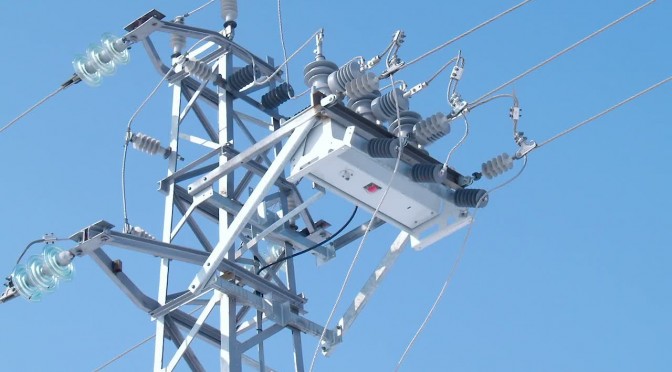HVDC transmission systems have emerged as a key player in the integration of offshore wind energy, a development that is reshaping the global energy landscape. This is a significant advancement in the pursuit of renewable energy sources, as the world grapples with the urgent need to transition from fossil fuels to more sustainable alternatives.
Offshore wind energy is a highly promising renewable energy source due to its abundant availability and the increasing efficiency of wind turbines. However, harnessing this energy and integrating it into the power grid presents unique challenges. The main hurdle is the transmission of power from offshore wind farms, often located far out at sea, to the mainland grid. This is where High Voltage Direct Current (HVDC) transmission systems come into play.
https://googleads.g.doubleclick.net/pagead/ads?client=ca-pub-3719320540157135&output=html&h=280&adk=896402185&adf=1597013405&pi=t.aa~a.1381849204~i.5~rp.4&w=623&fwrn=4&fwrnh=100&lmt=1689254361&num_ads=1&rafmt=1&armr=3&sem=mc&pwprc=6315279982&ad_type=text_image&format=623×280&url=https%3A%2F%2Fwww.energyportal.eu%2Fnews%2Fhvdc-transmission-systems-a-key-player-in-offshore-wind-energy-integration%2F49160%2F&host=ca-host-pub-2644536267352236&fwr=0&pra=3&rh=156&rw=623&rpe=1&resp_fmts=3&wgl=1&fa=27&dt=1689254361787&bpp=5&bdt=3339&idt=-M&shv=r20230711&mjsv=m202307110101&ptt=9&saldr=aa&abxe=1&cookie=ID%3D1f9d4a62a533922b-22e5d3ff36e1008b%3AT%3D1686092192%3ART%3D1689254367%3AS%3DALNI_MZHVXaEZI7xlJ-hl06ZcwVLNcmlyw&gpic=UID%3D00000c445046936a%3AT%3D1686092192%3ART%3D1689254367%3AS%3DALNI_Mbg-iW1Uc7kEoNrLm2V77fMgmgO0w&prev_fmts=0x0%2C1089x280&nras=3&correlator=4458460120275&frm=20&pv=1&ga_vid=1070051188.1686092185&ga_sid=1689254361&ga_hid=1718592118&ga_fc=1&u_tz=120&u_his=39&u_h=768&u_w=1366&u_ah=728&u_aw=1366&u_cd=24&u_sd=1&adx=71&ady=1759&biw=1089&bih=587&scr_x=0&scr_y=47&eid=44759875%2C44759926%2C44759837%2C31075757%2C31076063%2C44788441%2C44796826%2C44796896&oid=2&pvsid=92321475240796&tmod=1196380898&nvt=1&ref=https%3A%2F%2Fwww.google.com%2F&fc=1408&brdim=-8%2C-8%2C-8%2C-8%2C1366%2C0%2C1382%2C744%2C1106%2C587&vis=1&rsz=%7C%7Cs%7C&abl=NS&fu=128&bc=31&ifi=3&uci=a!3&btvi=1&fsb=1&xpc=KAqz8GkEUp&p=https%3A//www.energyportal.eu&dtd=97
HVDC transmission systems are designed to transmit large amounts of power over long distances with minimal losses, making them ideal for connecting offshore wind farms to the grid. Unlike traditional Alternating Current (AC) systems, HVDC systems are not subject to the same level of power loss over long distances. This is because HVDC systems transmit power as a direct current, reducing the resistive losses that occur in AC systems.
Moreover, HVDC systems are more flexible and controllable than AC systems. They allow for precise control over the power flow, which is critical in integrating variable renewable energy sources like wind into the grid. This flexibility also makes HVDC systems more resilient to faults and disturbances, enhancing the overall reliability of the power grid.
https://googleads.g.doubleclick.net/pagead/ads?client=ca-pub-3719320540157135&output=html&h=280&adk=896402185&adf=243725944&pi=t.aa~a.1381849204~i.9~rp.4&w=623&fwrn=4&fwrnh=100&lmt=1689254361&num_ads=1&rafmt=1&armr=3&sem=mc&pwprc=6315279982&ad_type=text_image&format=623×280&url=https%3A%2F%2Fwww.energyportal.eu%2Fnews%2Fhvdc-transmission-systems-a-key-player-in-offshore-wind-energy-integration%2F49160%2F&host=ca-host-pub-2644536267352236&fwr=0&pra=3&rh=156&rw=623&rpe=1&resp_fmts=3&wgl=1&fa=27&dt=1689254361766&bpp=2&bdt=3317&idt=2&shv=r20230711&mjsv=m202307110101&ptt=9&saldr=aa&abxe=1&cookie=ID%3D1f9d4a62a533922b-22e5d3ff36e1008b%3AT%3D1686092192%3ART%3D1689254367%3AS%3DALNI_MZHVXaEZI7xlJ-hl06ZcwVLNcmlyw&gpic=UID%3D00000c445046936a%3AT%3D1686092192%3ART%3D1689254367%3AS%3DALNI_Mbg-iW1Uc7kEoNrLm2V77fMgmgO0w&prev_fmts=0x0%2C1089x280%2C623x280%2C289x250&nras=5&correlator=4458460120275&frm=20&pv=1&ga_vid=1070051188.1686092185&ga_sid=1689254361&ga_hid=1718592118&ga_fc=1&u_tz=120&u_his=39&u_h=768&u_w=1366&u_ah=728&u_aw=1366&u_cd=24&u_sd=1&adx=71&ady=2388&biw=1089&bih=587&scr_x=0&scr_y=187&eid=44759875%2C44759926%2C44759837%2C31075757%2C31076063%2C44788441%2C44796826%2C44796896&oid=2&pvsid=92321475240796&tmod=1196380898&nvt=1&ref=https%3A%2F%2Fwww.google.com%2F&fc=1408&brdim=-8%2C-8%2C-8%2C-8%2C1366%2C0%2C1382%2C744%2C1106%2C587&vis=1&rsz=%7C%7Cs%7C&abl=NS&cms=2&fu=128&bc=31&ifi=4&uci=a!4&btvi=3&fsb=1&xpc=S8nkiH5q5x&p=https%3A//www.energyportal.eu&dtd=162
Another advantage of HVDC systems is their ability to connect asynchronous grids. This means that they can link grids operating at different frequencies or grids that are not synchronized, facilitating cross-border and intercontinental power transmission. This capability is particularly important in the context of offshore wind energy, as it allows for the integration of wind farms located in different sea regions into a unified, transnational grid.
However, despite these advantages, the adoption of HVDC technology in offshore wind energy integration is not without challenges. The main issue is the high initial investment required for HVDC systems. This is due to the complex technology and the need for specialized equipment such as converters and cables. Additionally, the maintenance of HVDC systems can be challenging due to their offshore location and the harsh marine environment.
https://googleads.g.doubleclick.net/pagead/ads?client=ca-pub-3719320540157135&output=html&h=280&adk=896402185&adf=2004899153&pi=t.aa~a.1381849204~i.13~rp.4&w=623&fwrn=4&fwrnh=100&lmt=1689254362&num_ads=1&rafmt=1&armr=3&sem=mc&pwprc=6315279982&ad_type=text_image&format=623×280&url=https%3A%2F%2Fwww.energyportal.eu%2Fnews%2Fhvdc-transmission-systems-a-key-player-in-offshore-wind-energy-integration%2F49160%2F&host=ca-host-pub-2644536267352236&fwr=0&pra=3&rh=156&rw=623&rpe=1&resp_fmts=3&wgl=1&fa=27&dt=1689254361775&bpp=2&bdt=3326&idt=2&shv=r20230711&mjsv=m202307110101&ptt=9&saldr=aa&abxe=1&cookie=ID%3D1f9d4a62a533922b-22e5d3ff36e1008b%3AT%3D1686092192%3ART%3D1689254367%3AS%3DALNI_MZHVXaEZI7xlJ-hl06ZcwVLNcmlyw&gpic=UID%3D00000c445046936a%3AT%3D1686092192%3ART%3D1689254367%3AS%3DALNI_Mbg-iW1Uc7kEoNrLm2V77fMgmgO0w&prev_fmts=0x0%2C1089x280%2C623x280%2C289x250%2C623x280%2C1089x587&nras=7&correlator=4458460120275&frm=20&pv=1&ga_vid=1070051188.1686092185&ga_sid=1689254361&ga_hid=1718592118&ga_fc=1&u_tz=120&u_his=39&u_h=768&u_w=1366&u_ah=728&u_aw=1366&u_cd=24&u_sd=1&adx=71&ady=2765&biw=1089&bih=587&scr_x=0&scr_y=494&eid=44759875%2C44759926%2C44759837%2C31075757%2C31076063%2C44788441%2C44796826%2C44796896&oid=2&pvsid=92321475240796&tmod=1196380898&nvt=1&ref=https%3A%2F%2Fwww.google.com%2F&fc=1408&brdim=-8%2C-8%2C-8%2C-8%2C1366%2C0%2C1382%2C744%2C1106%2C587&vis=1&rsz=%7C%7Cs%7C&abl=NS&fu=128&bc=31&ifi=5&uci=a!5&btvi=4&fsb=1&xpc=WFMDq5NOU1&p=https%3A//www.energyportal.eu&dtd=553
Nevertheless, the potential benefits of HVDC systems in offshore wind energy integration far outweigh these challenges. As the technology continues to advance and economies of scale are realized, the costs of HVDC systems are expected to decrease, making them an increasingly viable solution for offshore wind energy integration.
In conclusion, HVDC transmission systems are playing a pivotal role in harnessing the potential of offshore wind energy. They offer a solution to the challenge of transmitting power from offshore wind farms to the mainland grid, while also enhancing the flexibility and reliability of the power system. Despite the challenges associated with their adoption, HVDC systems are set to become an integral part of the global shift towards renewable energy.


